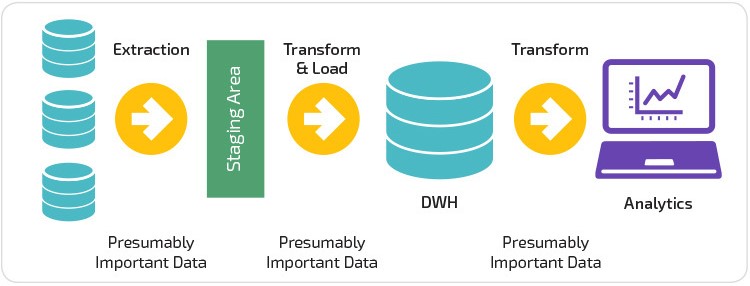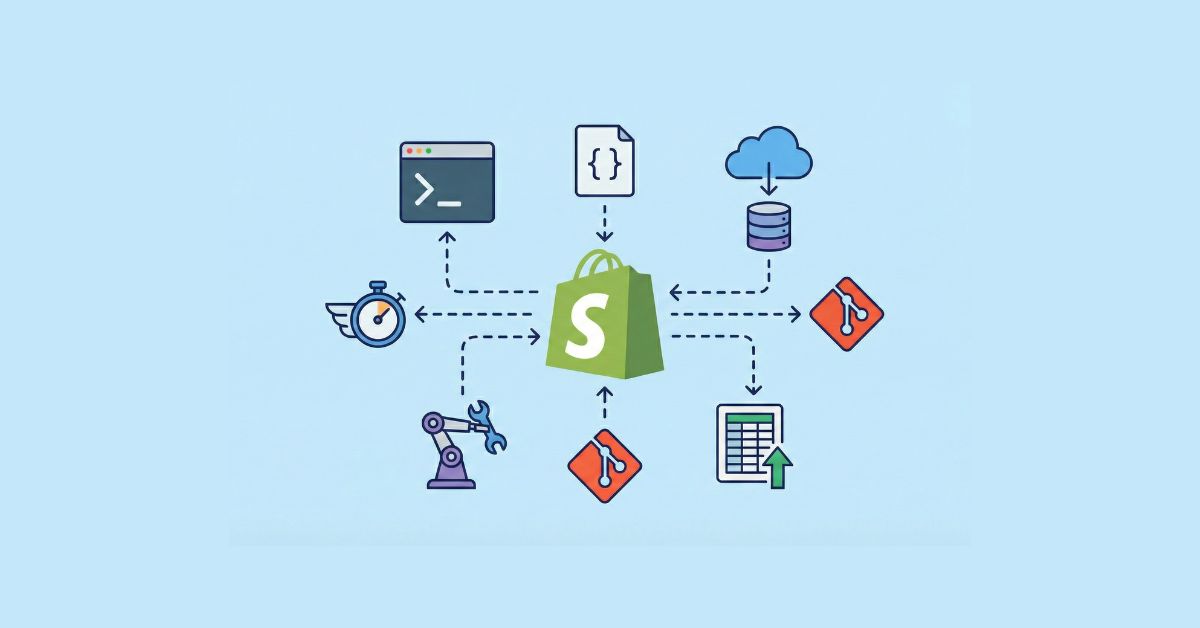In today’s dynamic world fueled by data, businesses, and governments heavily rely on this invaluable resource to make informed decisions. However, the complexities and challenges of managing and leveraging data can be overwhelming, particularly due to the diverse formats and sources it originates from. This is where the transformative prowess of ETL (Extract, Transform, Load) comes into play.
What Is ETL(Extract Transform Load)?
ETL is a pivotal process in data management, meticulously crafted to extract data from various sources, transform it into a consistent and harmonized format, and seamlessly load it into a designated database. The ETL journey begins with the extraction phase, where data is diligently sourced from multiple origins. It then undergoes an intricate transformation process, meticulously tailored to meet specific requirements and ensure seamless cohesion. Finally, the transformed data finds its rightful place in the target system, completing the Extract Transform Load cycle. Through its meticulous standardization and transformation techniques, ETL empowers organizations to navigate the complexities of handling multiple data sources, facilitating enhanced manageability, reliability, and usability.
What Is ETL Process:
Extraction: Data is sourced meticulously from diverse origins.
Transformation: Data undergoes a meticulous process to ensure consistency and cohesion.
Loading: The transformed data is gracefully loaded into a target system.
ETL enables organizations to amalgamate data from diverse sources, creating a comprehensive and holistic perspective of their information landscape. The unified view empowers decision-makers to make astute and enlightened business choices. It also reduces the need for manual intervention, automating data integration and transformation processes, resulting in operational efficiency gains.

Why is ETL important in Data Management?
ETL allows organizations to automate their data management processes, reducing the time and effort required to extract and transform data manually. This improves the speed and efficiency of data processing and enables organizations to scale their operations as needed. Additionally, Extract Transform Load can help organizations identify and correct data quality issues, such as missing values or inconsistencies, which can have a significant impact on decision-making.
ETL is an essential process in data management that allows organizations to extract data from various sources, transform it into a consistent format, and load it into a target database.
Process of ETL
The ETL process is composed of three phases: extraction, transformation, and loading. In this section, we will discuss each of these phases in detail.
Extraction
The first phase of the ETL process involves extracting data from various sources such as databases, files, and APIs. During this phase, the data is identified, selected, and retrieved from the source systems. The extraction process may involve filtering, selecting, or joining data from multiple sources. Once the data has been extracted, it is moved to a staging area, where it is prepared for the transformation phase.
Transformation
The second phase of the ETL process involves transforming the data into a consistent format that can be loaded into the target database. During this phase, the data is cleaned, validated, and enriched. This involves performing operations such as data mapping, data type conversion, and data normalization. The transformation process may also involve performing calculations, aggregations, and data enrichment. The goal of the transformation phase is to ensure that the data is accurate, consistent, and ready for loading into the target database.
Loading
The third and final phase of the ETL process involves loading the transformed data into the target database. During this phase, the data is loaded into the target system and undergoes a final check to ensure that it meets the required quality standards. Once the data has been loaded into the target database, it is ready to be used for analysis, reporting, and decision-making.
Are you looking for a reliable ETL partner? Contact GrapesTech Solutions to learn how we can help you manage your data more efficiently.
Advantages offered by ETL
Now let us look at some of the advantages offered by ETL in detail.
Data Integration
One of the primary benefits of ETL is that it enables organizations to integrate data from different sources. This is critical as organizations typically have data in different formats and structures, making it difficult to combine and analyze. By leveraging ETL, organizations can extract data from different sources, transform it into a consistent format, and load it into a target database, thereby creating a unified view of their data. This enables organizations to make informed business decisions, improve operational efficiency, and gain a competitive advantage.
Data Quality
Data quality is a significant concern for organizations as inaccurate data can lead to wrong decisions, lost opportunities, and reputational damage. ETL plays a crucial role in ensuring data accuracy by identifying and correcting errors in the data before loading it into the target database. By removing duplicates, correcting errors, and converting data types, ETL enables organizations to work with reliable and consistent data, which ultimately leads to better decision-making.
Efficiency
ETL automates the process of data integration and transformation, reducing the need for manual intervention. This improves the efficiency of the data management process and reduces the risk of errors. By automating repetitive tasks, ETL frees up resources and enables organizations to focus on more critical tasks such as data analysis and decision-making.
Scalability
As the volume of data generated by organizations continues to grow, it is becoming increasingly challenging to manage it effectively. Extract Transform Load helps to address this challenge by breaking down large volumes of data into smaller, more manageable chunks. This improves the scalability of the data management process, allowing organizations to work with data sets of varying sizes.
Cost-effectiveness
Manual data integration and transformation can be time-consuming, error-prone, and costly. ETL eliminates the need for manual intervention, reducing the cost of data management. By automating data management processes, ETL saves time and reduces the likelihood of costly mistakes. This enables organizations to allocate resources more efficiently and focus on more critical tasks.
Conclusion
ETL is a critical process in data management that enables organizations to integrate and transform their data into a meaningful format. The Extract Transform Load process involves three distinct phases: extraction, transformation, and loading. By leveraging ETL, organizations can gain valuable insights from their data, improve operational efficiency, and make informed business decisions.
Extract Transform Load is an essential process in data management that enables organizations to integrate, standardize, and transform their data into a meaningful format. By leveraging ETL, organizations can gain valuable insights from their data and make informed business decisions. ETL provides several benefits, including data integration, efficiency, accuracy, scalability, and cost-effectiveness.
As the volume of data generated by organizations continues to grow, ETL is becoming increasingly essential in ensuring that data is effectively managed and leveraged to achieve business objectives.
GrapesTech Solutions stands out as a beacon of expertise and innovation in the realm of data management. With our cutting-edge ETL services, we offer comprehensive solutions that streamline the data management process, harmonize and standardize data from diverse sources, and construct a cohesive and unified vista of your valuable information.







